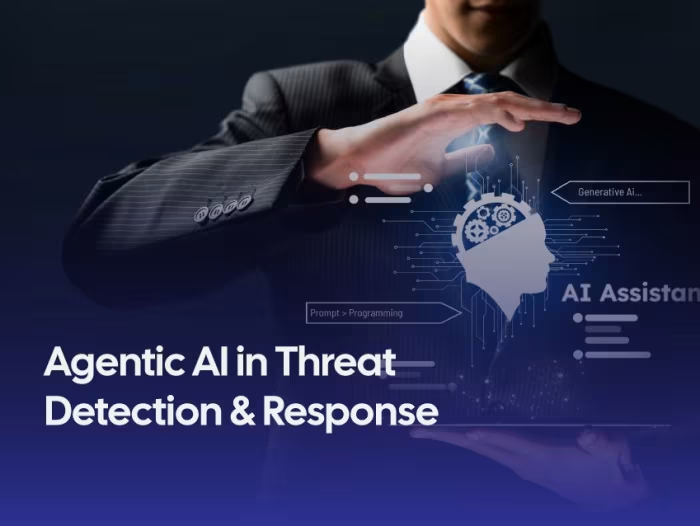Resource / Online Journal
Proactive Threat Hunting vs Reactive Incident Response – Why Both Matter?
Read how proactive and reactive security approaches work together to detect, respond, and recover faster from growing cyber threats.
Published on Nov 10, 2025

What is Proactive Threat Hunting?
Proactive threat hunting involves searching for hidden threats before they cause damage, while reactive incident response focuses on managing and mitigating incidents after they are detected. Balancing these two approaches enables organizations to stay ahead of attackers while minimizing impact when breaches occur.
Proactive cyber threat hunting is a cybersecurity practice in which a specialized analyst conducts proactive searches for potential threats. It relies on a mix of threat intelligence, advanced security tools, data analytics, and deep analysis of security data.
Modern security threat hunters utilize automated security tools to sift through vast logs and telemetry within the organization's network. The benefits are significant: early threat detection prevents extensive breaches, reducing risk and protecting sensitive information. Continuous learning and adapting to new methodologies ensure threat hunters maintain peak effectiveness against emerging adversaries.
Benefits of Proactive Threat Hunting
Proactive cyber threat hunting delivers significant advantages for organizations aiming to strengthen their cybersecurity posture. By actively seeking out potential threats within the network, security teams can detect and respond to malicious activity in real-time, reducing the likelihood of data breaches and limiting the scope of security incidents.
Additionally, proactive threat hunting enables organizations to develop aggregated risk scores, helping prioritize security efforts and allocate resources to the most critical threats. By continuously refining their incident response capabilities through proactive hunting, organizations are better equipped to defend against future attacks and adapt to the ever-changing threat landscape.
What is Reactive Incident Response?
Incident response is the structured process of addressing security incidents such as malware infections or data breaches. A comprehensive incident response plan is executed by a formal incident response team, which is responsible for preparation, clear procedures for handling incidents, and robust communication protocols.
A reactive incident response standardizes procedures, roles, and steps, ensuring a consistent and effective response. Typical incident response process includes detection, analysis, containment, eradication, and recovery, often based on SANS or NIST Frameworks.
Management and Detection Technologies
Constant monitoring of security events through advanced security systems such as Security Information and Event Management (SIEM) is crucial for real-time threat identification. SIEM solution monitors and aggregate security event data from across systems, applications, and endpoint devices like computers and laptops to detect anomalies.
Enhancing this with Entity Behavior Analytics (UEBA), another example of a modern security system, allows detection of unusual user or device behavior indicative of insider threats or advanced malware. UEBA also complements other security tools, such as EDR and XDR, by detecting threats that may bypass conventional security measures.
Extended detection methods incorporate additional analytic layers to capture sophisticated threats missed by standard tools. Together, these technologies empower security teams to act promptly and decisively against emerging risks.
The Role of Entity Behavior Analytics
Entity behavior analytics scrutinizes user and device activities to identify patterns inconsistent with normal operations. This technique is a powerful complement to threat hunting, unveiling insider threats and stealthy attackers that traditional signature-based tools may overlook. By combining behavioral data with SIEM and endpoint detection systems, organizations gain a comprehensive view of threats within their organization's environment.
Harmonizing Threat Hunting and Incident Response
Threat hunting teams work closely with incident response teams, combining proactive search capabilities with reactive response measures. This collaboration strengthens security operations by ensuring that detectors are informed by the latest threat intelligence and hunting insights, enabling quicker, more informed responses. Integrating both strategies reinforces the organization's security posture, making the organization resilient to both known and emerging threats.
Prioritizing Cyber Threats with a Balanced Approach
Effective cybersecurity requires prioritizing threats based on potential impact and risk. Organizations benefit from using both proactive and reactive measures, hunting for hidden threats early on and responding swiftly to cyber incidents, to address the most critical vulnerabilities efficiently. This balanced approach is especially important for addressing advanced persistent threats that may evade traditional defenses, allowing security analysts to prioritize and respond more effectively.
Best Practices for Incident Response Planning
Incident response planning should include scenarios such as a data breach to ensure preparedness for a wide range of cybersecurity threats. Plans must be living documents, regularly reviewed and adapted to evolving threats and organizational changes.
TechDemocracy can help you with regularly reviewing and updating these plans. We can proactively help you prevent or mitigate future incidents by addressing past incidents and strengthening defenses.
Common Challenges and Mistakes
One of the most common obstacles is the shortage of skilled threat hunters, as effective threat hunting requires specialized expertise and ongoing training. Another frequent issue is the high volume of false positives generated by security data, which can overwhelm security teams and divert attention from actual threats.
To address these challenges, organizations should invest in advanced threat hunting tools and technologies. Additionally, fostering strong communication and collaboration among security teams is essential for sharing threat intelligence and coordinating incident response efforts.
Conclusion
In the dynamic world of cybersecurity, neither proactive threat hunting nor reactive incident response alone is sufficient. Both are essential, complementary practices that together form a strong defense against cyber adversaries.
Recommended articles


Agentic AI in Threat Detection & Response: A Human-Centered Approach to Cybersecurity
Take Your Identity Strategy
to the Next Level
Strengthen your organization's digital identity for a secure and worry-free tomorrow. Kickstart the journey with a complimentary consultation to explore personalized solutions.